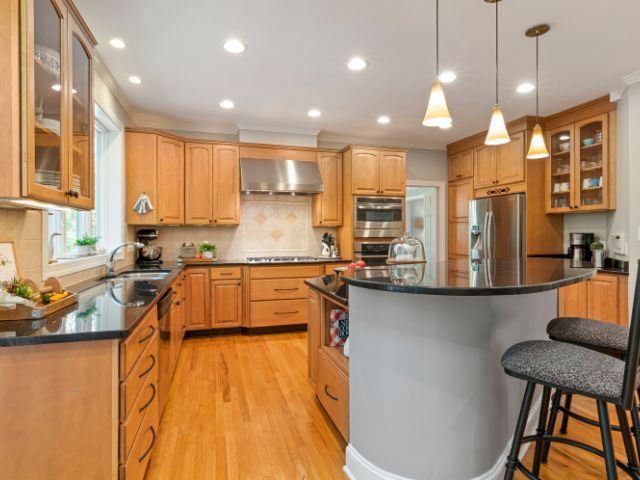Sub‑Zero refrigerators and freezers are the gold standard in luxury kitchen appliances—engineered for precision, performance, and elegance. But even the finest cooling systems can develop subtle issues over time. Some of these problems might be nearly invisible at first glance, yet they quietly sap efficiency, spike energy bills, and undermine the appliance’s reliability.
If your Sub‑Zero unit feels less ice-cold, hums louder, or your food seems to spoil faster than usual, your kitchen might be trying to tell you something. In this deep-dive blog post, we’ll expose the hidden warning signs of an inefficient Sub‑Zero system, reveal why they matter, and share actionable strategies to keep your kitchen running flawlessly.
1. Elevated Energy Bills — More Than Just Inflation
A sudden rise in your energy costs? Your Sub‑Zero fridge might be working harder than it should.
Even slight inefficiencies—like failing gaskets or dusty condenser coils—can cause your unit to cycle more frequently, drawing significantly more power.
Why it matters:
Sub‑Zero appliances are luxury investments, but even premium components can drift off peak efficiency if neglected. Over time, the extra workload leads to strain, higher utility bills, and potential component fatigue.
What you can do:
- Compare energy bills month to month, especially during warmer seasons.
- Have your appliance professionally evaluated for abnormal power draw.
2. Fluctuating Temperatures — Beyond the Control Panel
Do your leftovers spoil unevenly? Are vegetables wilting faster or ice cubes turning to water before use?
Temperature variance, even small, signals behind-the-scenes inefficiency problems:
- Worn-out door seals
- Blocked or dirty condenser coils
- Defective thermostats or sensors
Why it matters:
Temperature inconsistency leads to food spoilage—and that’s just the beginning. Persistent fluctuations put added pressure on the compressor, accelerating wear and risk of failure.
What you can do:
- Use a refrigerator thermometer to spot hot or cold zones.
- Replace gaskets or schedule a professional check-up if you notice persistent instability.
3. Loud Operation — The Devil in the Decibels
Sub‑Zero units strive for whisper-quiet cooling. But if you notice unusual noise—buzzing, grinding, rattling—it’s more than an annoyance.
Potential causes include:
- Failing fan motors
- Loose components
- Vibrations from unstable internal parts
Why it matters:
Unusual sounds are often early warnings of failing mechanical parts. Ignoring these cues can lead to more serious breakdowns—or complete system failure.
What you can do:
- Listen closely during quiet hours.
- If the hum turns into clunking or buzzing, bring in a technician before small faults escalate.
4. Excess Frost or Condensation — Trouble Ahead
Frost where it shouldn’t be or droplets forming inside the unit are classic signs of a Sub‑Zero in distress.
The usual suspects?
- Damaged door seals
- Malfunctioning defrost heater cycles
- Blocked air vents disrupting airflow
Why it matters:
Frost buildup reduces airflow, decreases cooling efficiency, and eventually overwhelms the defrost system—leading to costly ice blockages or compressor stress.
What you can do:
- Inspect the seals for gaps or tears.
- Thaw frost manually only if safe; otherwise, contact a pro for a full defrost system check.
5. Frequently Running Compressor — A Red Flag
A healthy fridge runs in cycles—cooling, resting, then cooling again. But if your Sub‑Zero is constantly on, that can spell trouble.
Possible causes:
- Leaking refrigerant
- Dirty coils or filters
- Defective relay or control boards
Why it matters:
An always-on compressor is working overtime—and is a clear sign of inefficiency. This not only drives up energy use but risks premature compressor burnout.
What you can do:
- Monitor if the fridge never seems to stop.
- Schedule professional diagnostics to reset cycles or address mechanical faults.
6. Visible Wear on Seals & Gaskets — The Silent Culprits
Invisible air is the enemy. If your door seals are cracked, warped, or don’t align, cold air sneaks out—and warm air creeps in.
Why it matters:
You’re not just losing cool air; the unit’s cooling system must continuously compensate—leading to higher energy use, inconsistent temperatures, and unnecessary strain on internal components.
What you can do:
- Perform a paper test: slide a piece of paper between the seal and the frame—if it slides easily all around, it’s time for a replacement.
- Opt for high-quality OEM replacement gaskets when needed.
7. Frosted-Up Freezer Compartments — A Legacy Lesson
Even with a built-in ice maker or Adaptive defrost features, frost can still form in your freezer.
Why it matters:
- Frost impedes airflow, reducing efficiency.
- It clogs the defrost drainage system, potentially causing leaks into lower compartments.
What you can do:
- Use gentle, commercial-safe defrost techniques—never sharp objects.
- If blockages persist, enlist professional assistance to address underlying defrost system issues.
8. Frequent Error Codes or Sensor Malfunctions — The Digital Undercurrents
Modern Sub‑Zero models use smart sensors and digital control boards. Frequent errors or malfunctions often point to underlying inefficiencies.
Examples include:
- Erratic humidity or temperature readings
- Unexplained beeps, blinking lights, or touchpad glitches
Why it matters:
These “digital hiccups” may signal failing sensors, emerging circuit faults, or partially damaged firmware—each capable of degrading performance quietly.
What you can do:
- Keep track of error occurrences and cigarette codes.
- Use a tech’s access to diagnostic logs to address the real root causes.
9. Inadequate Ventilation Around the Unit — Invisible But Critical
Sub‑Zero units perform best with good airflow. Tight cabinetry, blocked vents, or too-close placement in tight corners can suffocate performance.
Why it matters:
Poor ventilation raises internal temperatures, forcing the unit to engage in constant spillover cooling—wearing down components and increasing energy draw.
What you can do:
- Ensure there’s adequate clearance as per the manual.
- Keep surrounding cabinetry dust-free to support effective airflow.
10. Irregular Maintenance History — A Pattern of Decline
Look back on your maintenance notes—have inspections or cleanings come and gone? Missed maintenance is usually the root of every issue we’ve covered.
Why it matters:
Preventive care keeps hidden issues from becoming recurring troubles. Without it, minor warning signs turn into major repairs—or replacements.
What you can do:
- Commit to a quarterly or bi-annual maintenance schedule.
- Ask your Sub‑Zero technician to document each visit—then stick to that rhythm.
Frequently Asked Questions
- Why doesn’t my Sub‑Zero seem as efficient anymore?
Even slight inefficiencies—like worn seals, cold-chain interruptions, or dusty components—can subtly degrade performance over time. - How can I test for hidden performance issues?
Monitor energy usage, listen for unusual sounds, check for frost buildup, and keep an eye on cooling cycles. Any red flags deserve a professional check. - Does a noisy Sub‑Zero always indicate a serious problem?
Not always—but unexpected noises like rattling or grinding rarely improve on their own. Investigate promptly. - How often should maintenance be done?
At minimum, exercise proper cleaning and inspection every 3–6 months. Have a professional visit annually to ensure peak performance. - What happens if I keep ignoring these signs?
Ignoring subtle warning signals increases your risk for major component failure, emergency downtime—and a dramatic hit to both your budget and convenience.
Conclusion: Let Your Sub‑Zero Perform Its Best—for Years to Come
Sub‑Zero appliances are designed to last—and deliver exceptional performance. But hidden issues undermine this promise silently, stealthily.
By paying attention to signs like inconsistent temperatures, strange noises, inefficient energy use, and poor maintenance, you can act before small issues become big problems.
Whether it’s refreshing door gaskets, deep-cleaning condenser coils, or simply listening for that weird hum—it all adds up to improved efficiency, longer appliance life, and a kitchen that keeps impressing.
Need help uncovering hidden inefficiency or optimizing your Sub‑Zero setup? Our trained, Sub‑Zero-savvy professionals are just a call away—ready to safeguard your kitchen’s performance and your peace of mind.


